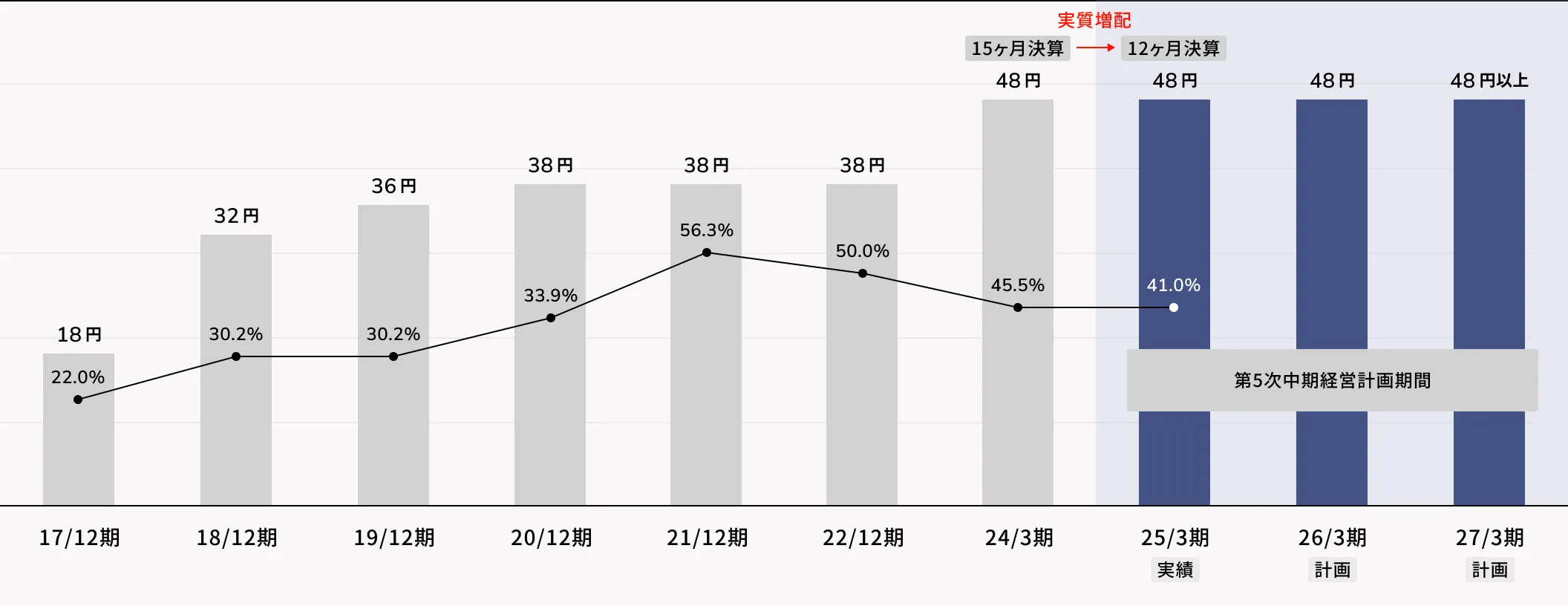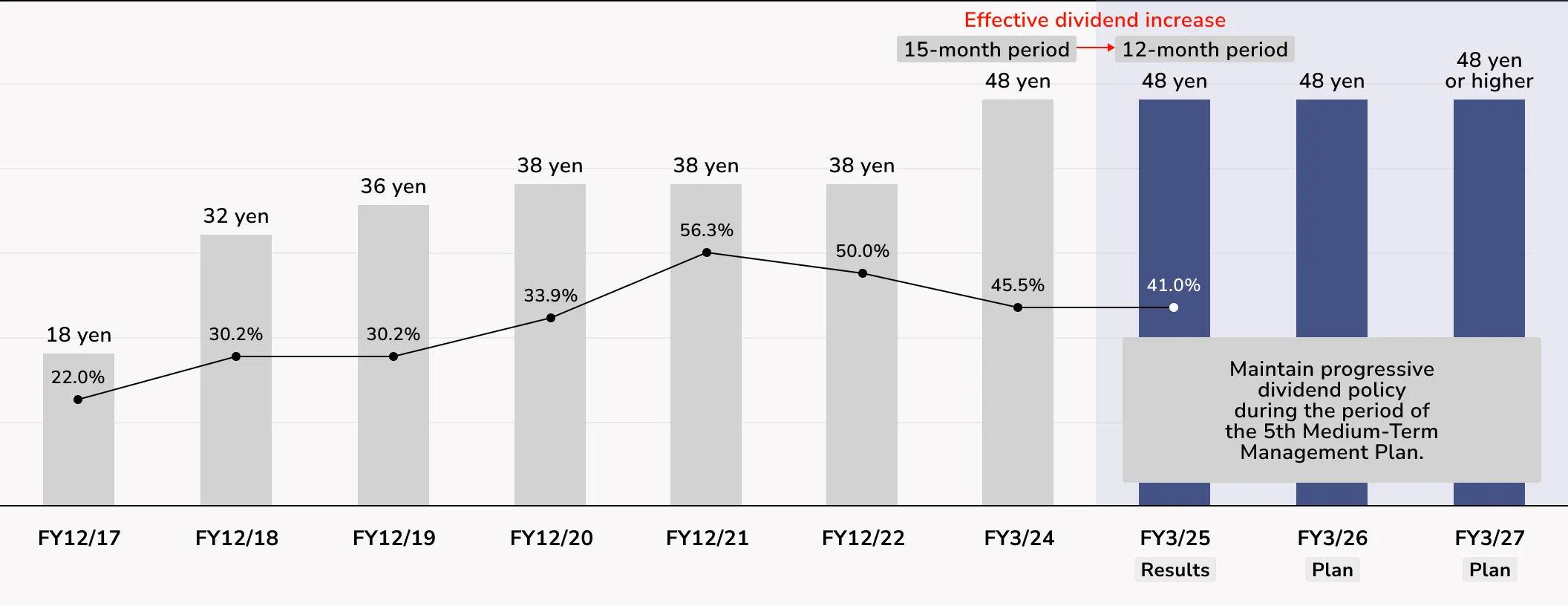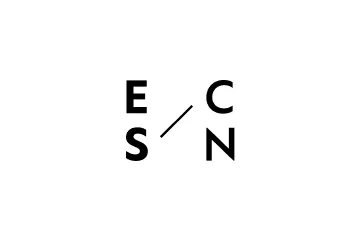© ES-CON JAPAN Ltd.
About Us
Business Plan
Business Plan
Long-Term Vision 2030
Overview of 5th Medium-Term Management Plan
We are currently working on our "Long-Term Vision 2030" which sets out the state we want ES-CON JAPAN to be and the direction we should aim for by fiscal 2030, and our "5th Medium-Term Management Plan" (fiscal year ending March 2025 to fiscal year ending March 2027), which is "Phase I" to achieve this.
The direction we should aim for
With the themes of "Deepening" and "Evolution" in mind, we will promote management with the aim of achieving further growth in our core businesses and further stabilizing our profit structure, thereby contributing to society and creating a virtuous cycle that will lead to further corporate growth.
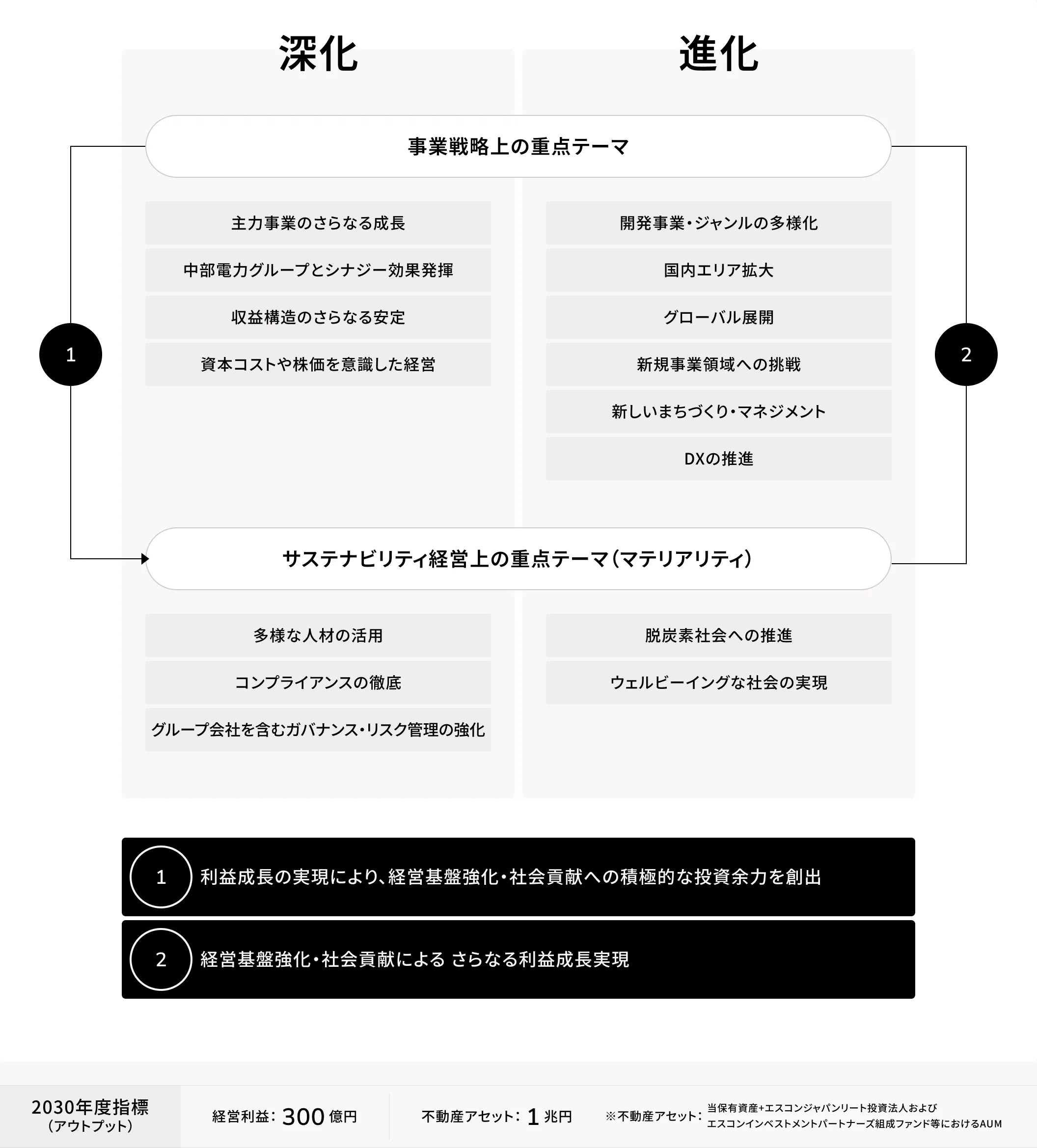
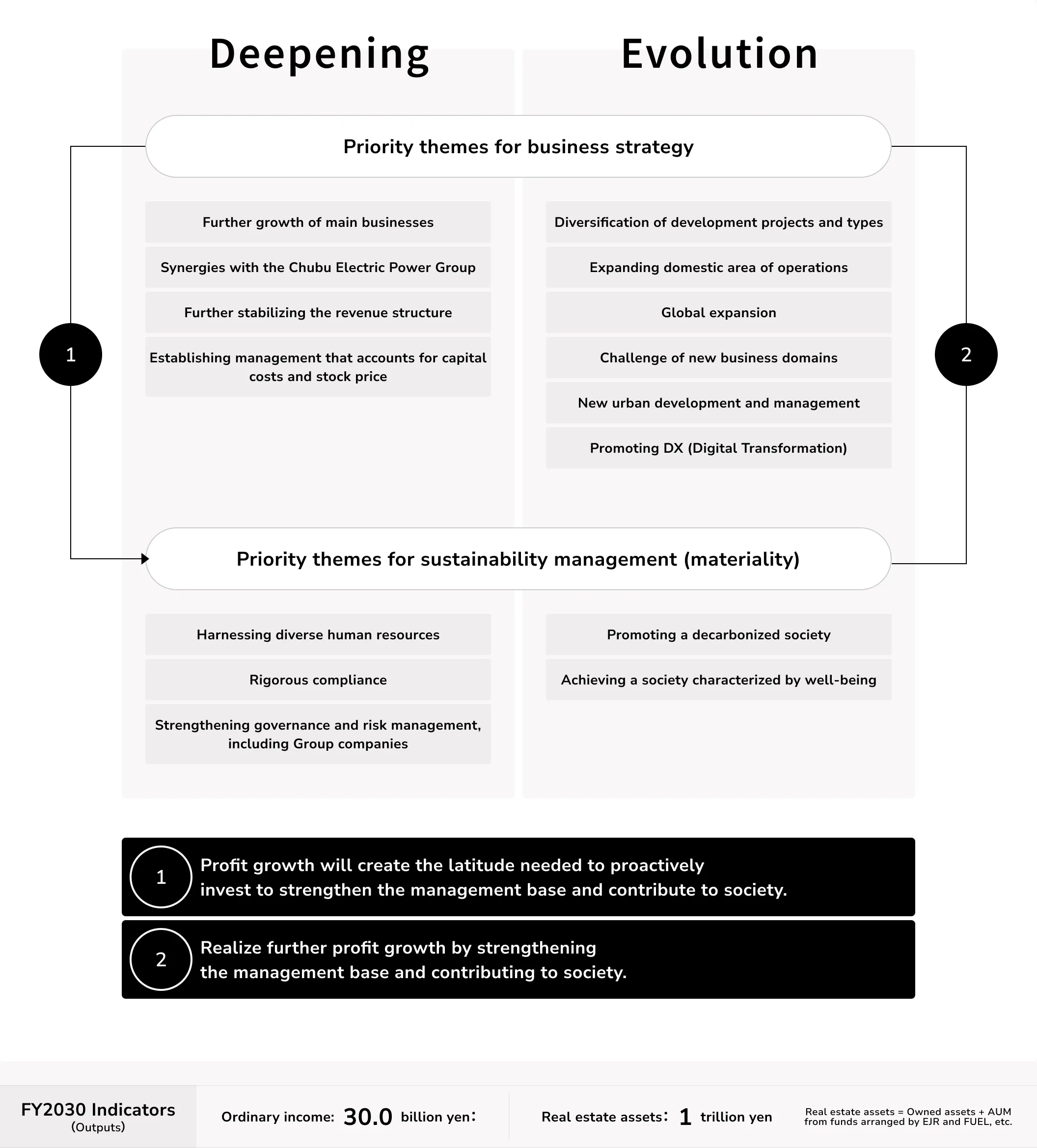
Performance Plan
In the fiscal year ending March 2025, sales of condominiums and property sales in Real estate development business progressed smoothly, resulting in operating profits that exceeded the initial plan. Furthermore, we have revised upward our consolidated operating profit plans for the fiscal years ending March 2026 and March 2027.
| 24/3 term | 25/3 term | 26/3 term | 27/3 term | ||
|---|---|---|---|---|---|
| Achievements15-month settlement | Achievements | plan | plan | ||
| Sales (billion yen) | 1,188 | 1,136 | 1,330 | 1,500 | |
| Operating profit (billion yen) | 190 | 213 | 230 | 250 |
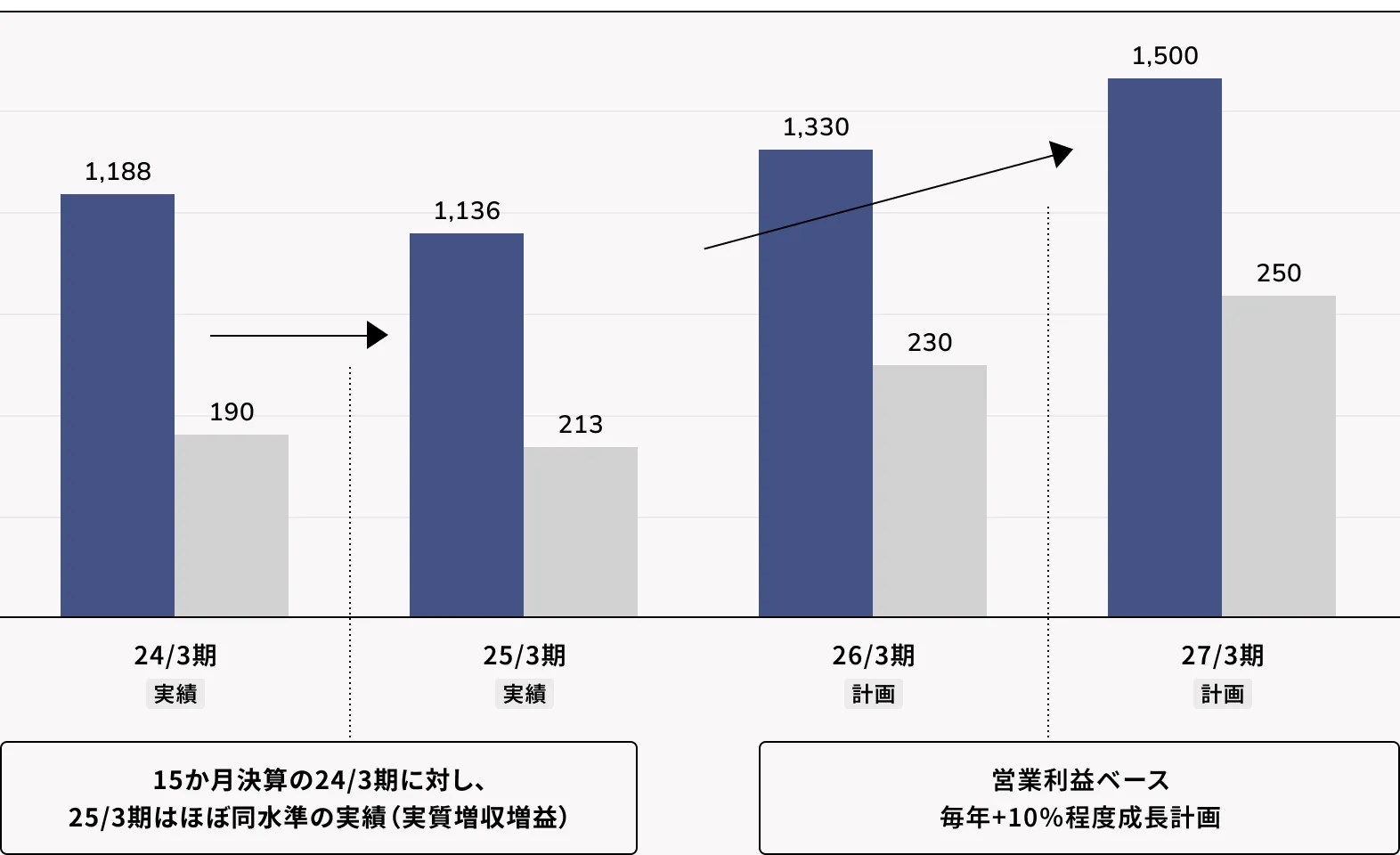
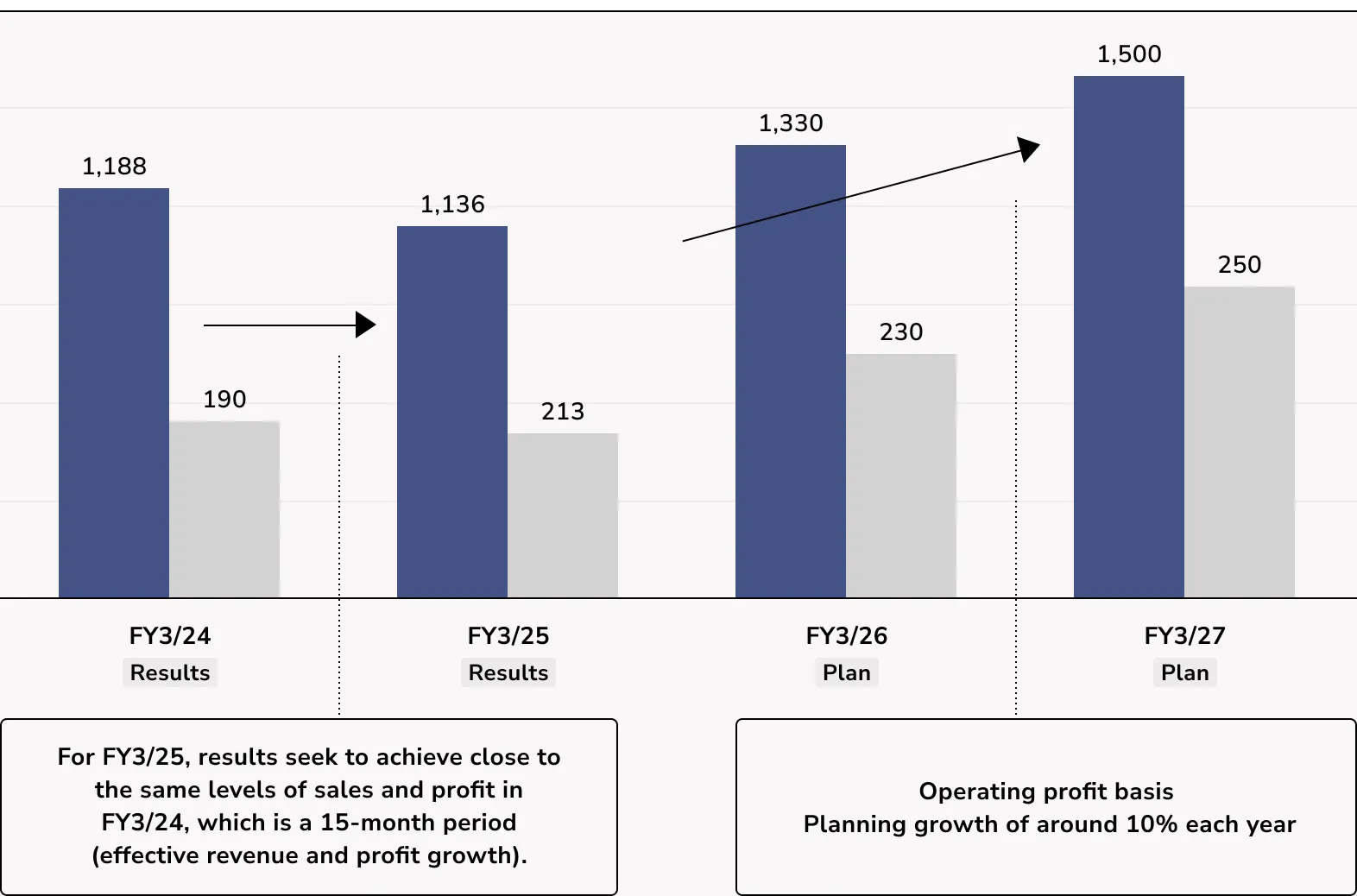
Investment Plan
We plan business investments to further stabilize our earnings structure over the medium to long term and to develop businesses that can become new pillars. In the fiscal year ending March 2025, we made steady progress against the plan.
| 5th Medium-Term Management Plan(billion yen) | ||||||||
|---|---|---|---|---|---|---|---|---|
| Fiscal year ending March 2025 | Fiscal year ending March 2026 | Fiscal year ending March 2027 | 3-year cumulative total | |||||
| Achievements | plan | Increase/decrease | Corrective Plan | Initial Plan | Corrective Plan | Initial Plan | ||
| Total gross investment amount | 720 | 610 | 110 | 660 | 770 | 1,120 | 1,120 | 2,500 |
| Condominium development | 161 | 200 | △39 | 200 | 200 | 250 | 250 | 611 |
| Profitable property development | 427 | 200 | 227 | 200 | 300 | 500 | 500 | 1,127 |
| Acquisition of profitable properties currently in operation | 78 | 150 | △72 | 200 | 200 | 300 | 300 | 578 |
| overseas investment | 54 | 50 | 4 | 60 | 60 | 60 | 60 | 174 |
| others | 0 | 10 | △10 | 0 | 10 | 10 | 10 | 10 |
| Amount recovered | 220 | 284 | △64 | 325 | 308 | 400 | 417 | 945 |
| Of which, income properties | 84 | 121 | △37 | 144 | 142 | 277 | 242 | 505 |
| Net investment amount | 500 | 326 | 174 | 335 | 462 | 720 | 703 | 1,555 |
Management Indicators
We are committed to promoting management that takes into account capital costs and stock prices, and to improving shareholder and corporate value.
| 24/3 term | 25/3 term | 26/3 term | 27/3 term | |||
|---|---|---|---|---|---|---|
| Achievements | Achievements | plan | plan | |||
| safety | Stock income ratio *1*2 | 25.0% | 26.2% | 28.2% | 30.0% | |
| Stock income ratio/General and administrative expenses coverage ratio (cash basis) *3 | 112.0% | 115.2% | 114.2% | 116.8% | ||
| Equity ratio(%) | 18.1% | 17.2% | 17.6% | 17.5% | ||
| capitalEfficiency | ROE | 14.5% | 14.8% | 13.9% | 14.0% | |
| ROIC *4 | 4.5% | 3.5% | 3.5% | 3.6% | ||
※1Stock revenue: Real estate segment profits + asset management segment profits
※2Recurring revenue ratio: Recurring revenue / Total segment profit
※3Stock revenue/general and administrative expenses coverage ratio: (stock revenue + depreciation expenses in the real estate rental segment + amortization of goodwill in the real estate rental segment) / (general and administrative expenses - depreciation expenses in general and administrative expenses - total amortization of goodwill)
※4ROIC: (Consolidated ordinary profit + interest paid - corporate tax, etc.) / (Average of "interest-bearing liabilities + net assets" at the beginning and end of the period)
Dividend Policy
Starting with the Second Medium-Term Business Plan, we have adopted a dividend policy (Progressive Dividend Policy) that sets the minimum dividend per share (DPS) at the previous fiscal year's DPS and, in principle, "will not reduce dividends; will only maintain or increase dividends."
